Cancer is a daunting reality for both humans and animals alike. When it comes to our beloved canine companions, understanding cancers in dogs becomes imperative. Just like in humans, cancer can affect various parts of a dog’s body, leading to serious health concerns. In this comprehensive guide, we delve into the types, causes, and treatment options for cancers in dogs, equipping pet owners with valuable knowledge to better care for their furry friends.
Contents Overview
Types of Cancers in Dogs
Cancers in dogs can manifest in various forms, affecting different organs and systems within their bodies. Some of the most common types include:
- Mastocytoma:
Mastocytomas are tumors that arise from mast cells, which are part of the immune system. These tumors can vary in appearance and behavior, ranging from benign to highly aggressive. Commonly found in the skin, mastocytomas may also affect internal organs.
- Melanoma:
Melanoma in dogs is similar to its human counterpart, originating from melanocytes, the cells responsible for producing pigment. These tumors often appear as darkly pigmented growths on the skin or mucous membranes and can be benign or malignant.
- Lymphoma:
Lymphoma is a cancer of the lymphatic system, affecting lymph nodes and other organs involved in the immune response. In dogs, lymphoma typically presents as swollen lymph nodes, lethargy, and weight loss, and can affect various organs throughout the body.
- Hemangiosarcoma:
Hemangiosarcoma is an aggressive cancer that originates in the blood vessels, commonly affecting the spleen, liver, and heart. Unfortunately, hemangiosarcoma is often diagnosed at an advanced stage, making treatment challenging.
- Osteosarcoma:
Osteosarcoma is the most common type of bone cancer in dogs, typically affecting large and giant breeds. These tumors arise from the bone cells and often manifest as lameness, swelling, and pain in the affected limb.
- Fibrosarcoma:
Fibrosarcoma is a cancer of the fibrous connective tissue, commonly found in the skin and subcutaneous tissues. These tumors can be locally invasive and may recur even after surgical removal.
- Squamous Cell Carcinoma:
Squamous cell carcinoma is a type of skin cancer that arises from the squamous cells, which make up the outer layer of the skin. These tumors are often seen in areas exposed to sunlight, such as the ears, nose, and lips.
- Anal Sac Adenocarcinoma:
Anal sac adenocarcinoma originates from the anal glands and is relatively rare but highly aggressive. Dogs with this type of cancer may experience symptoms such as difficulty defecating, scooting, and licking the anal area.
- Bladder Cancer:
Bladder cancer in dogs can arise from the lining of the bladder and may present with symptoms such as blood in the urine, frequent urination, and difficulty urinating.
- Mammary Gland Carcinoma:
Unspayed female dogs are at risk of developing mammary gland tumors, with a significant percentage being malignant. Early detection and surgical removal of these tumors are crucial for a favorable prognosis.
- Neoplasm:
Neoplasms are abnormal growths of cells that can be benign or malignant. They can occur in various tissues and organs throughout the body, leading to a wide range of clinical signs depending on their location and size.
- Breast Cancer:
Breast cancer, or mammary gland carcinoma, is common in unspayed female dogs and can affect one or more of the mammary glands. Early spaying can significantly reduce the risk of developing this type of cancer.
- Histiocytoma:
Histiocytomas are benign tumors that arise from histiocytes, a type of immune cell. These tumors typically appear as solitary, raised masses on the skin and often regress spontaneously without treatment.
- Liver Cancer:
Liver cancer, or hepatocellular carcinoma, can originate from the liver cells themselves or from the bile ducts within the liver. Symptoms may include jaundice, vomiting, abdominal pain, and lethargy.
- Transitional Cell Carcinoma:
Transitional cell carcinoma affects the urinary tract, particularly the bladder and urethra. Symptoms may include blood in the urine, frequent urination, and difficulty urinating.
- Basal Tumors:
Basal cell tumors are relatively common skin tumors in dogs, arising from the basal cells of the epidermis. While usually benign, they can occasionally be locally invasive and require surgical removal.
- Leukemia:
Leukemia is a cancer of the blood and bone marrow, characterized by the uncontrolled proliferation of white blood cells. While less common in dogs than in humans, leukemia can still occur and may present with symptoms such as weakness, pale gums, and susceptibility to infections.
- Liposarcoma:
Liposarcoma is a cancer of the fat cells, often occurring in the limbs or body wall. These tumors can be locally invasive and may require aggressive surgical intervention for removal.
- Oral Melanoma:
Oral melanoma is a type of melanoma that affects the tissues of the mouth, including the gums, tongue, and palate. These tumors can be highly aggressive and may require a combination of surgery, radiation therapy, and chemotherapy for treatment.
- Papilloma:
Papillomas, or warts, are benign tumors caused by certain types of viruses. While they are usually harmless and may regress on their own, they can occasionally become irritated or infected and require medical intervention.
Causes of Cancers in Dogs
Understanding the causes of cancer in dogs is essential for pet owners to take preventive measures and minimize their furry friends’ risk of developing this dreaded disease. While the exact cause of cancer in dogs can be complex and multifactorial, several factors have been identified as potential contributors:
- Genetics:
- Genetic predisposition plays a significant role in certain breeds, making them more susceptible to specific types of cancer. For example, breeds such as Boxers, Golden Retrievers, and Bernese Mountain Dogs are at higher risk of developing certain cancers like mast cell tumors, lymphoma, and osteosarcoma, respectively.
- Inherited genetic mutations can increase the likelihood of cancer development. These mutations may affect tumor suppressor genes, oncogenes, or DNA repair mechanisms, leading to uncontrolled cell growth and cancer formation.
- Environmental Factors:
- Exposure to environmental carcinogens is a significant risk factor for cancer in dogs. Carcinogens are substances that can cause cancer by damaging DNA or disrupting normal cellular processes.
- Common environmental carcinogens include:
- Tobacco smoke: Secondhand smoke can increase the risk of nasal and lung cancers in dogs.
- Pesticides and herbicides: Chemicals used in lawn care and agriculture can contain carcinogenic compounds that dogs may be exposed to through ingestion, inhalation, or skin contact.
- Pollutants: Air and water pollutants, such as industrial emissions and contaminated water sources, may contribute to the development of cancer in dogs living in urban or industrial areas.
- Ultraviolet (UV) radiation: Dogs with light-colored fur or exposed skin areas are at risk of developing skin cancer from prolonged exposure to sunlight.
- Diet and Nutrition:
- Poor diet and nutrition can impact a dog’s overall health and immune function, potentially increasing their susceptibility to cancer.
- High-fat diets, excessive calorie intake, and consumption of processed foods with additives and preservatives have been linked to an increased risk of certain cancers.
- Conversely, diets rich in antioxidants, vitamins, and minerals may help reduce the risk of cancer by supporting the immune system and reducing oxidative stress and inflammation.
- Age:
- Age is a significant risk factor for cancer in dogs, with the incidence of cancer increasing as dogs get older. This is partly due to accumulated exposure to carcinogens over time and age-related changes in cellular function and DNA repair mechanisms.
- Geriatric dogs may also experience a decline in immune function and hormone imbalances, which can contribute to cancer development.
- Hormonal Factors:
- Hormonal imbalances can influence the development of certain cancers in dogs. For example, unspayed female dogs are at higher risk of developing mammary gland tumors due to prolonged exposure to estrogen and progesterone.
- Hormonal therapies, such as those used for breeding purposes or to manage reproductive issues, may also affect cancer risk in dogs by altering hormone levels and cellular proliferation.
- Infectious Agents:
- Certain viruses, bacteria, and parasites have been associated with an increased risk of cancer in dogs. These infectious agents can either directly cause cancer or promote tumor growth by inducing chronic inflammation and immune system dysregulation.
- Examples of infectious agents linked to canine cancer include:
- Canine papillomavirus: Associated with oral papillomas and oral squamous cell carcinoma.
- Helicobacter spp.: Linked to gastric adenocarcinoma in dogs.
- Bartonella spp.: Associated with vascular tumors such as hemangiosarcoma.
- Lifestyle Factors:
- Lifestyle factors such as obesity, lack of exercise, and exposure to stressors can influence cancer risk in dogs. Obesity, in particular, has been identified as a significant risk factor for certain cancers, including mammary gland tumors, transitional cell carcinoma, and osteosarcoma.
- Regular exercise and environmental enrichment can help reduce stress and support overall health, potentially lowering the risk of cancer in dogs.
Preventions and Care of Cancers in Dogs
Prevention and care are paramount when it comes to managing cancer in dogs. While it’s not always possible to completely eliminate the risk of cancer, there are proactive steps that pet owners can take to reduce their furry companions’ chances of developing this disease and improve their overall well-being. Here’s a comprehensive guide on prevention and care of cancers in dogs:
- Regular Veterinary Check-ups:
- Routine veterinary examinations are essential for early detection of any abnormalities or signs of cancer. Schedule regular check-ups with your veterinarian, especially as your dog ages.
- Be vigilant for any changes in your dog’s behavior, appetite, weight, or physical appearance, and promptly report any concerns to your veterinarian.
- Balanced Diet and Nutrition:
- Provide your dog with a balanced and nutritious diet tailored to their age, breed, size, and activity level. Opt for high-quality commercial pet foods or consult with a veterinary nutritionist for personalized dietary recommendations.
- Avoid feeding your dog excessive amounts of fatty or processed foods, and minimize their intake of food additives, preservatives, and artificial ingredients.
- Maintain a Healthy Weight:
- Obesity is a significant risk factor for cancer in dogs, as it can contribute to chronic inflammation, hormonal imbalances, and compromised immune function. Keep your dog at a healthy weight through regular exercise and portion control.
- Consult with your veterinarian to develop a weight management plan tailored to your dog’s individual needs and dietary requirements.
- Environmental Management:
- Minimize your dog’s exposure to environmental carcinogens, such as tobacco smoke, pesticides, herbicides, and industrial pollutants.
- Provide a safe and toxin-free living environment for your dog, including using natural or pet-safe cleaning products and avoiding the use of lawn chemicals and insecticides.
- Sun Protection:
- Protect your dog from prolonged sun exposure, especially if they have light-colored fur or exposed skin areas. Limit outdoor activities during peak sunlight hours and provide shade or shelter when spending time outdoors.
- Consider using pet-safe sunscreen on areas prone to sunburn, such as the nose, ears, and belly.
- Spaying and Neutering:
- Spaying female dogs and neutering male dogs at an appropriate age can reduce the risk of certain cancers, including mammary gland tumors, testicular tumors, and prostate cancer.
- Discuss the optimal timing for spaying or neutering with your veterinarian, taking into account your dog’s breed, age, and overall health.
- Exercise and Mental Stimulation:
- Regular exercise is essential for maintaining your dog’s physical health and mental well-being. Engage in daily walks, play sessions, and interactive games to keep your dog physically active and mentally stimulated.
- Provide environmental enrichment and mental stimulation through puzzle toys, training exercises, and novel experiences to prevent boredom and reduce stress.
- Dental Care:
- Maintain good oral hygiene by brushing your dog’s teeth regularly and providing dental treats or toys to promote dental health.
- Poor oral hygiene can lead to periodontal disease, which has been linked to an increased risk of certain cancers, such as oral squamous cell carcinoma.
- Vaccination and Parasite Control:
- Keep your dog up-to-date on vaccinations to protect against infectious diseases that may increase the risk of cancer, such as canine papillomavirus and canine distemper virus.
- Implement a comprehensive parasite control program to prevent infestations of fleas, ticks, and internal parasites, which can transmit diseases and weaken the immune system.
- Early Detection and Veterinary Care:
- Be vigilant for any signs or symptoms of cancer in your dog, including lumps or bumps, unexplained weight loss, changes in appetite or thirst, lethargy, coughing, difficulty breathing, or abnormal bleeding.
- If you notice any concerning symptoms, seek prompt veterinary care for a thorough evaluation and diagnosis. Early detection and intervention can significantly improve treatment outcomes and prognosis.
Treatment Options for Cancers in Dogs
Treatment options for cancer in dogs vary depending on the type of cancer, its stage, location, and the overall health of the dog. Veterinary oncologists may recommend one or more of the following treatment modalities to effectively manage cancer in dogs:
- Surgery:
- Surgical removal of the tumor is often the primary treatment for localized cancers, especially those that have not spread to other parts of the body.
- The goal of surgery is to remove as much of the tumor as possible while preserving surrounding healthy tissue.
- In some cases, surgery may be curative, particularly for small, well-defined tumors that have not metastasized.
- Chemotherapy:
- Chemotherapy involves the administration of anticancer drugs either orally or intravenously to kill cancer cells or inhibit their growth.
- Chemotherapy may be recommended as a standalone treatment for certain types of cancer or in combination with other modalities such as surgery or radiation therapy.
- The treatment protocol and frequency of chemotherapy sessions vary depending on the type and stage of cancer, as well as the individual dog’s response to treatment.
- Radiation Therapy:
- Radiation therapy utilizes high-energy radiation beams to target and destroy cancer cells while minimizing damage to surrounding healthy tissue.
- It may be used as a primary treatment for localized cancers or as an adjunctive therapy following surgery to eliminate residual tumor cells.
- Radiation therapy sessions are typically administered over several weeks, and the total duration and dose of treatment are determined based on the specific cancer type and the dog’s tolerance to therapy.
- Immunotherapy:
- Immunotherapy harnesses the dog’s immune system to recognize and attack cancer cells, offering a targeted and potentially more effective approach to cancer treatment.
- Immunotherapeutic agents may include vaccines, monoclonal antibodies, cytokines, or immune checkpoint inhibitors, which help enhance the immune response against cancer.
- Immunotherapy may be used alone or in combination with other treatment modalities to improve outcomes and reduce the risk of cancer recurrence.
- Palliative Care:
- Palliative care focuses on managing symptoms and improving the quality of life for dogs with advanced or terminal cancer.
- Palliative treatments may include pain management, nutritional support, physical therapy, and supportive care to alleviate discomfort and maintain the dog’s overall well-being.
- The goal of palliative care is to optimize the dog’s comfort and minimize suffering, even if a cure for the cancer is not possible.
- Targeted Therapy:
- Targeted therapy involves the use of drugs or other agents that specifically target cancer cells or molecular pathways involved in tumor growth and progression.
- These therapies may include tyrosine kinase inhibitors, angiogenesis inhibitors, or hormone-based therapies, depending on the specific cancer type and its molecular characteristics.
- Targeted therapy offers the potential for more precise and effective treatment with fewer side effects compared to traditional chemotherapy.
- Clinical Trials:
- Participation in clinical trials may offer dogs access to cutting-edge treatments and experimental therapies not yet widely available.
- Clinical trials allow researchers to evaluate the safety and efficacy of new treatments and may provide valuable insights into novel approaches for managing cancer in dogs.
- Owners interested in enrolling their dogs in clinical trials should consult with their veterinarian or a veterinary oncologist to determine eligibility and suitability for participation.
- Complementary and Alternative Therapies:
- Complementary and alternative therapies such as acupuncture, herbal medicine, dietary supplements, and massage therapy may be used in conjunction with conventional cancer treatments to support the dog’s overall health and well-being.
- While these therapies may not directly treat the cancer itself, they may help alleviate side effects, improve quality of life, and enhance the body’s natural healing mechanisms.
Bottom Line
Cancer is a formidable adversary, but armed with knowledge and understanding, pet owners can take proactive steps to detect, treat, and manage cancers in their dogs. Regular veterinary check-ups, a healthy diet, and minimizing exposure to environmental toxins are essential in preventing cancer and ensuring the well-being of our furry companions. By staying informed and proactive, we can give our dogs the best possible chance at a long and healthy life, free from the grips of cancer.

















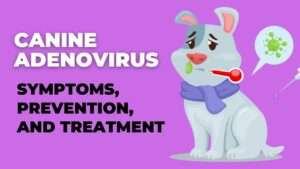
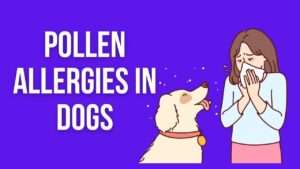


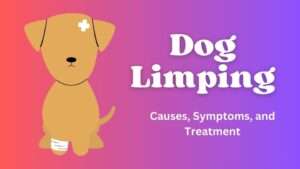

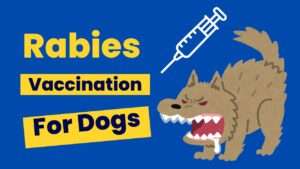


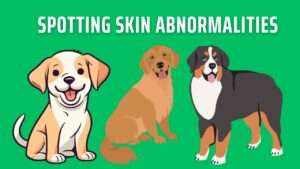
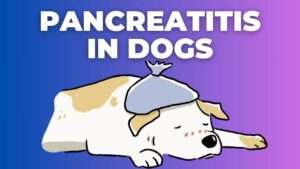
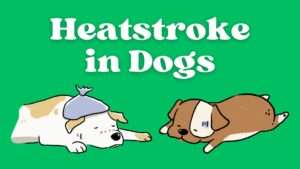







+ There are no comments
Add yours